Drip kits
Grekkon Limited is a drip irrigation company in Kenya with single and double emitter drip kits for vegetable or orchard drip irrigation in Kenya. Our single or double emitter drip kits for sale start from the kadogo drip kit (kitchen gardens) to 1-acre drip irrigation kits. Many farmers seek where to buy drip irrigation systems in Kenya. At Grekon Limited, they have the advantage of technical advice, and 4 months free field support. The latter upon their drip kit installation by the company
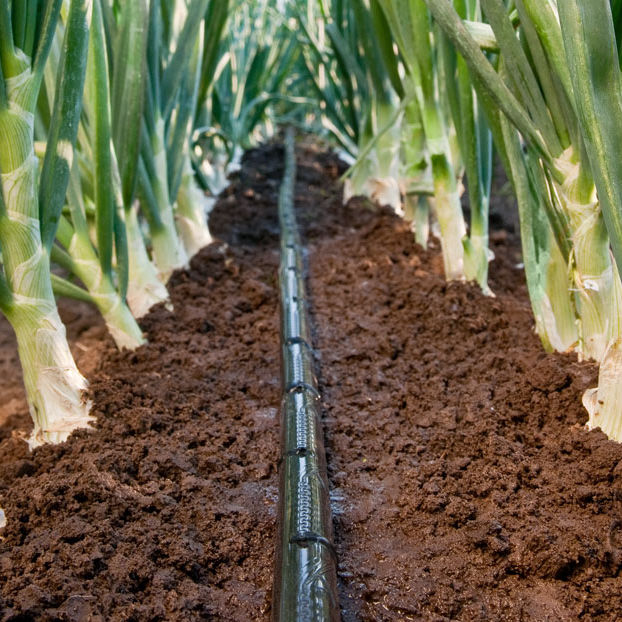
A drip line in a garlic farm
Our drip irrigation kit price is according to;
- Number of drip lines per bed
- Area under drip system installation
As an irrigation systems supplies company in Kenya, we provide drip irrigation pipes, and train on how to install drip lines to meet your drip irrigation requirements.
Regarded as the largest drip irrigation kits supplier in Kenya, we complement our systems with drip irrigation pipes for irrigation systems. These are PVC and HDPE irrigation pipes. Every drip kit has a drip irrigation pressure regulator, be it by gravity flow or pump powered
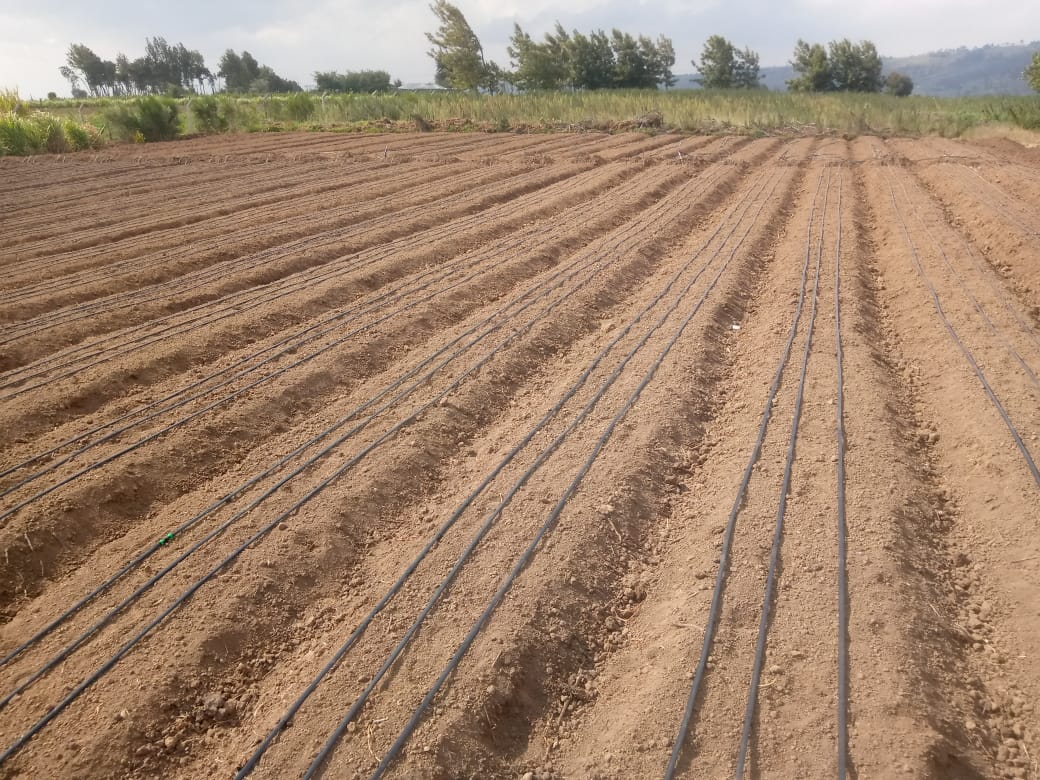
Onion drip tapes laid on planting beds
There are 2 types of drip kits for smallholder farmers
- Pre-perforated drip tapes. These are 0.3mm, 0.4mm, and 0.8mm thick. 8mm, 12mm, or 16mm in diameter, with emitters spaced at 1ocm, 15cm, 20cm, or 30cm. The 0.3mm and 0.4mm thicknesses are for vegetable crops irrigation. The 0.8mm thickness is for hedges and orchard irrigation
- Button drippers. These are emitters attached to the surface of a 1mm thick, 16mm diameter HDPE pipe. They irrigate hedges, orchards and forestry.
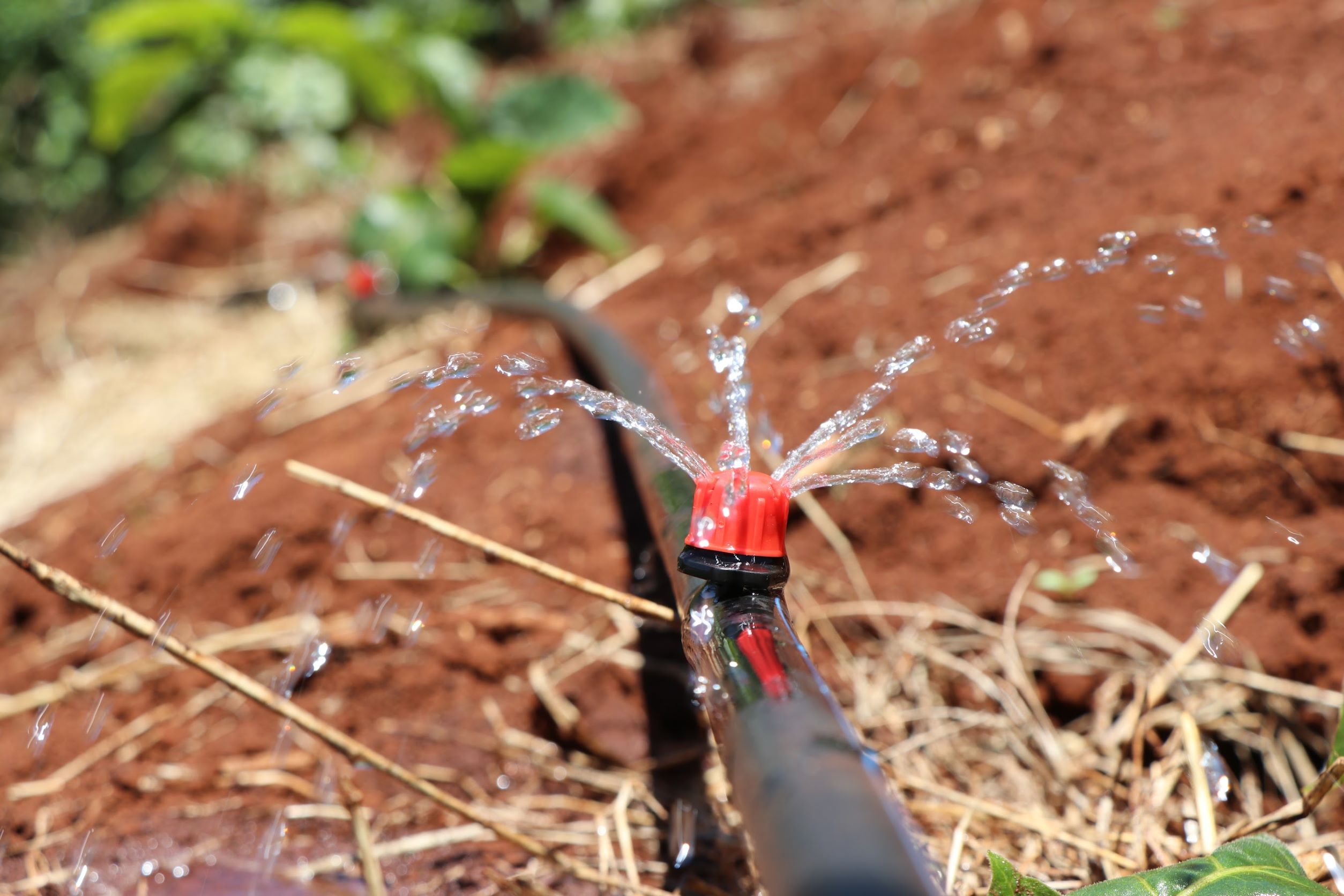
A button dripper in a fruit orchard
Winnie, a smallholder urban farmer in Nairobi county whose drip irrigation system was set up by Grekkon Limited
Drip Kits FAQs
What are drip kits?
Our drip irrigation kits in Kenya consist of; a tank connector, a drip irrigation filter, HDPE or PVC pipe, and drip irrigation system fittings. A drip kit is an assembly of these items to create an irrigation system that primarily waters via the the drip emitters
What do you need for drip irrigation?
Drip Irrigation Requirements
1. A water source.
2. A water pump and piping mechanism to move this water from the source to the tank or directly to the drip irrigation system.
3. Water storage tank if you’re using gravity to irrigate
4. A tank connector
5. Pipes for the mainline and sub-main line.
6. Mainline and sub mainline fittings
7. Drip irrigation water filter
8. Drip irrigation pipes
9. Accessories
10. Ball valves

2 drip line rows per bed in a tomato growing farm
How much is a drip irrigation system in Kenya?
Drip irrigation kit prices
| Acreage | Size in Meters Square | Price in KES |
| Kadogo drip kit | 50 to 200 | KES 5,500 – KES 9,850 |
| 1/8th acre | 506 | KES 17,500 |
| 1/4 acre | 1,024 | KES 33,000 |
| 1/2 acre | 2,025 | KES 65,000 |
| 3/4 acre | 3,036 | KES 80,000 |
| 1 acre | 4,048 | KES 135,000 |
How do you prepare land for drip irrigation in Kenya?
i. Plough to a fine tilth. First with a disc plow, then a harrow plough
ii. Prepare raised planting beds to a height of 30cm, and the width to 80cm, to 100cm depending on the crop type
iii. Maintain a bed to bed spacing of 30cm, to 40cm
How much does it cost to put in a drip system? What is the cost of drip kits?
The drip system costs given above are complete. They cover all material and labor for the unit area depending on the crop type
When is the best time to do drip irrigation?
Irrigation time. Early morning watering so that the soil warms during the day. Watering in the afternoon causes water loss to evaporation. Watering in the evening lowers the night soil temperature to a level that encourages root diseases
Which drip tape thickness should I use?
0.4mm thickness and above are well suited for tropical open field crops. 0.3mm drip lines in tropical locations will do in greenhouses where direct radiation is less
What is the right pressure for drip irrigation in Kenya?
Drip irrigation tapes in Kenya are designed to work under gravity pressure (from 1.5 meters head or 0.15 bar). The water pressure determines it’s dispersement in the soil. Low pressure discharge (<22.0L/hour) is best because the water goes deeper, and covers a narrower area whic discourages weeds growth

Low discharge emitters have better results
How much water is required for drip irrigation?/ How much water do I pass through my drip kits?
This depends on the crop and irrigation sequence. Generally, your soil will hold 16 cubic of water per acre for a good crop
How do I select my emitter spacing?
Emitter spacing is determined by crop spacing. Closer crops like onion, garlic, green beans have closer emitters at 15cm. Modretely spaced crops like tomato, strawberry, herbs have an emitter spacing of 20cm installed. Further spaced crops like peppers and chilies have an emitter spacing of 30cm in place. For fruit trees and forestry, the (button) emitter is physically installed where at the base of the crop
How long should I drip irrigate?
Water until the soil holds enough water without runoff. The length of watering depends on the soil type. Sandy soils will run-off faste than loamy or clay soils. Choose the most appropriate length and frequency of irrigation according to your soil type
How exactly does drip irrigation work?
By allowing water to sip to the crop root zone slowly
How do you drip irrigate?
By allowing the drip emitters to irrigate until the soil around the root zone has enough moisture. Drip irrigation is done by opening the main water valve from the main tank/ source. Once the water gets to the farm, the farmer will open the respective valves to each block to irrigate block by block. The time of irrigation will depend on the flow rate and the water needed.
Why is drip irrigation expensive?
Because it utilises the most pipes, fittings, and accessories and the most installation labour.
How many emitters can I put on a drip line?
There is no limit to the number of emitters, put them according to the number of trees. Vegetable drip lines are pre-perforated and so one does not add emitters. The number of emitters depends on the emitter spacing on the drip line.
What are the two main types of drip irrigation?
- Pre-perforated drip pipes and button drippers
- Surface and sub-surface drip irrigation. The former is common, the latter is rarely practised and is expensive. Sub-surface drip irrigation is watering with drip emitters buried under the soil. It allows for fertigation (liquid fertiliser application), drenching (soil pesticde application). and is the most water efficient method as none is lost to evaporation. These drippers are specially designed for that rola. Grekkon Limited manufactures sub-surface drip emitters on order
How to Install Drip Kits in Kenya
Time needed: 1 day.
- Design.
Make a detailed sketch outlay of the farm showing all relevant measurements and distances in meters
- Trench.
Make trenches for the main and sub-main pipes if the system will be sub-surface. This applies for polyvinyl chloride (PVC) pipes that have to be buried because they have no ultra violet treatment which prevents rapid degradation by the sun. They also break easily. High density polyethylene pipes (HDPE) are surface pipes because they have UV treatment and do not crack easily
- Connections.
Begin the connection at the tank or pump station
- Piping.
Lay the PVC or HDPE main and sub-main pipes
- Emitters.
Connect the drip lines and align the emitters
- Test
Check your system for pressure, leakages, and sufficiency of water supply
- Check the flow rate
Use a 1-liter container and determine how long it takes to fill up. This will give you your actual flow rate. The higher your emitter flow rate, the higher the rate of watering and less incidence of emitter clogging
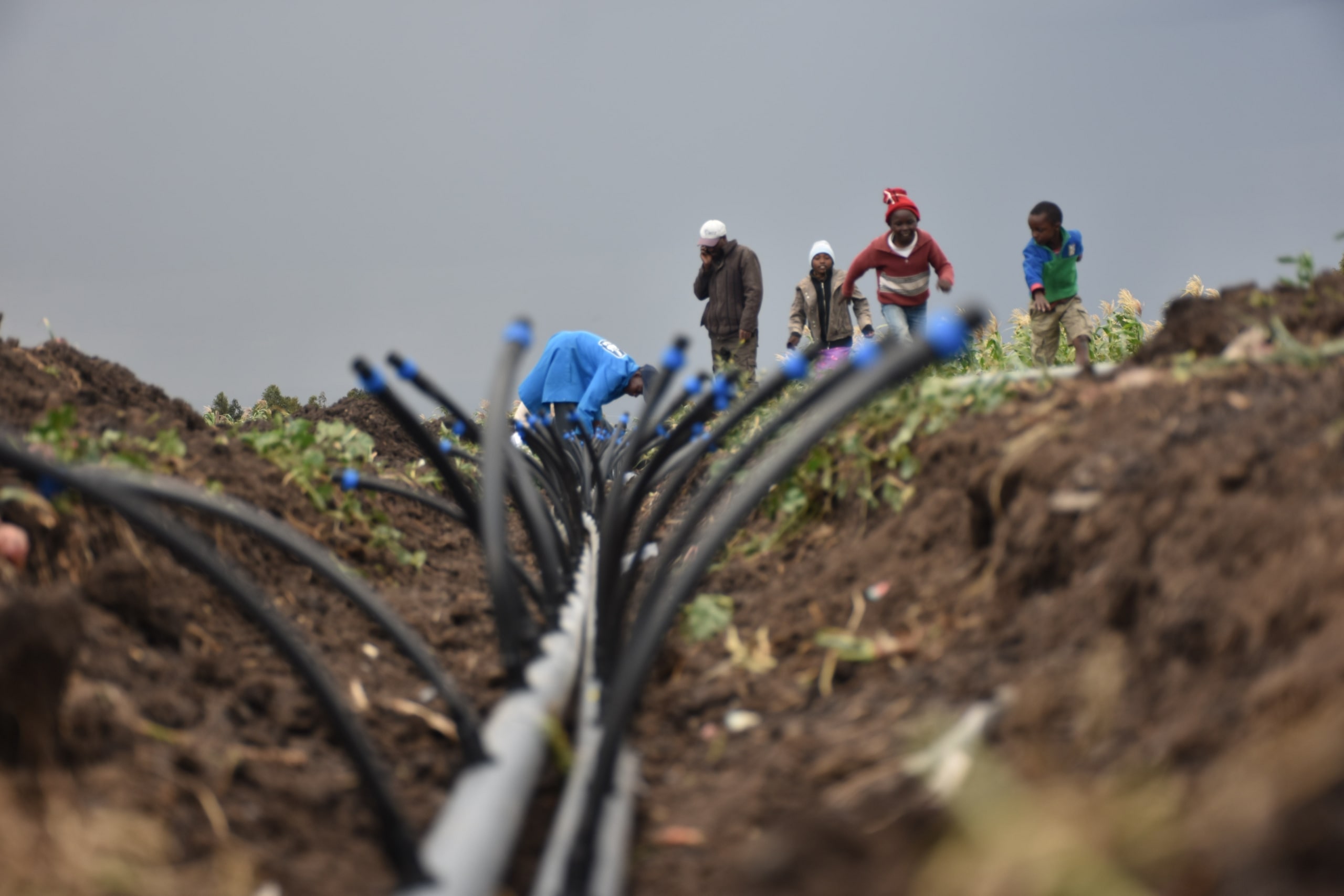
Drip kit installation in Endarasha area, Nyeri county by Grekkon Limited
Drip kit Specifications
- 0.3mm, 0.4mm and 0.8mm thick
- have a flow rate of 1.6L/Hour to 2.4L/hour
- 16mm in diameter
- have double emitter spacing at either 15cm, 20cm, or 30 cm


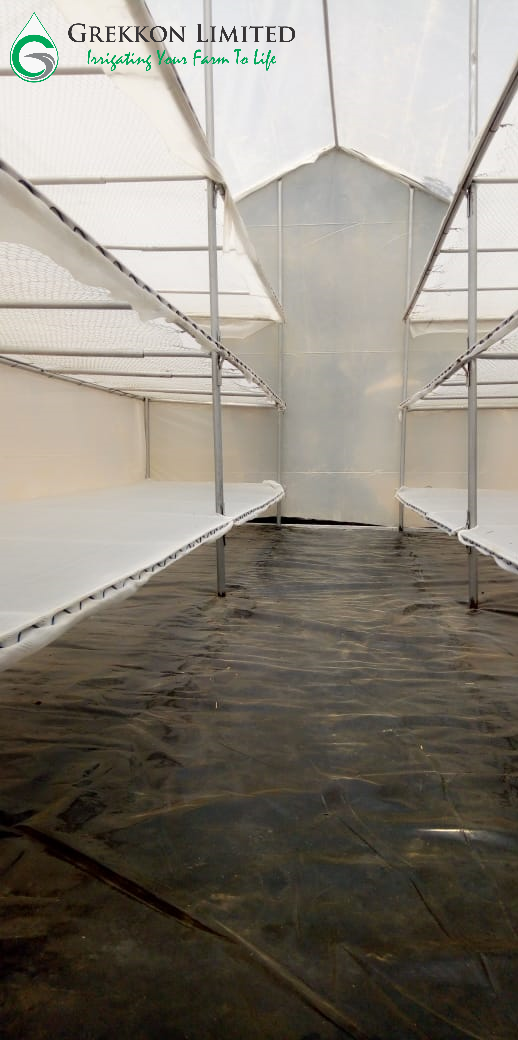
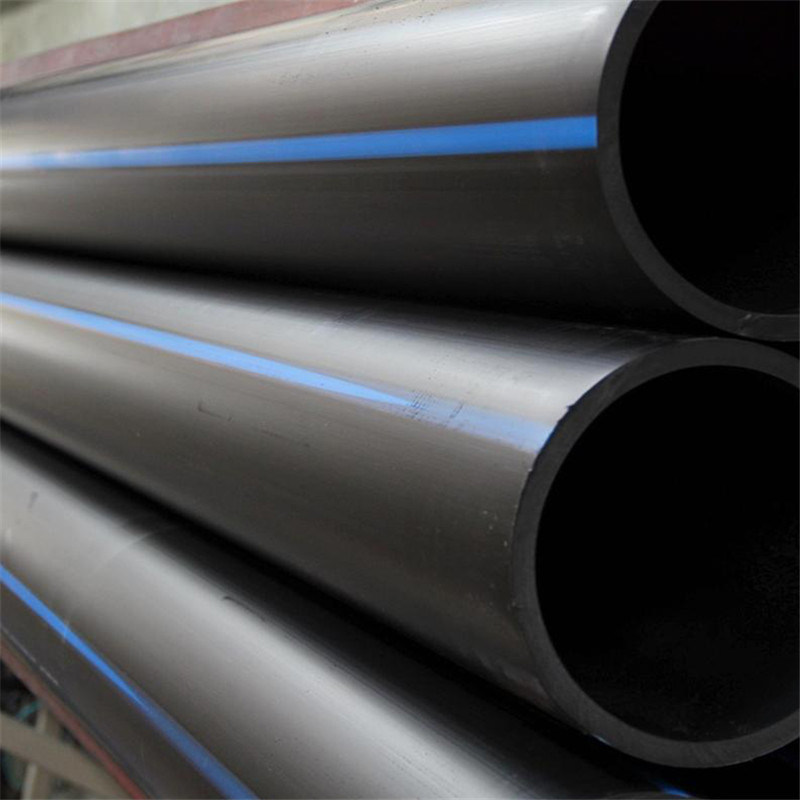
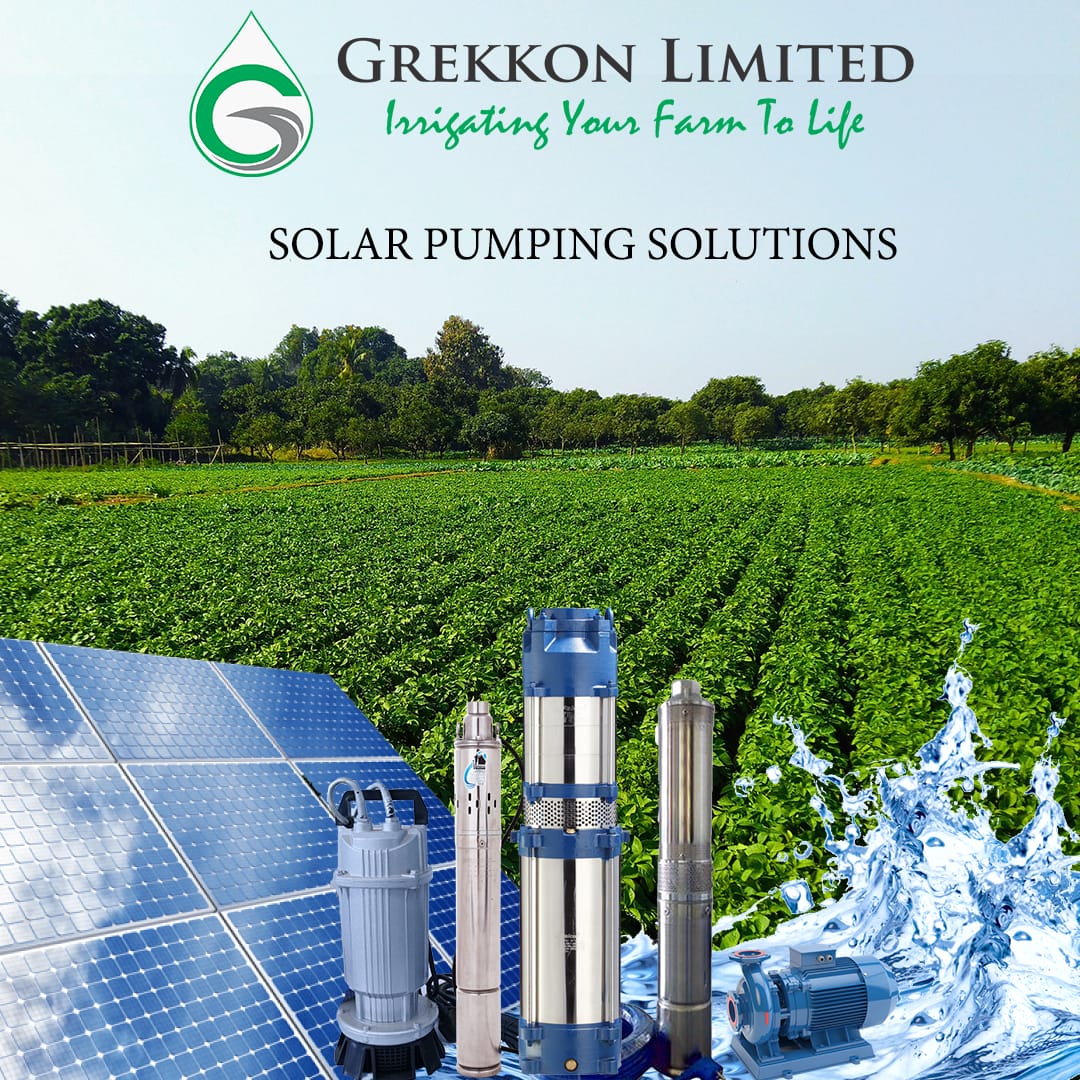
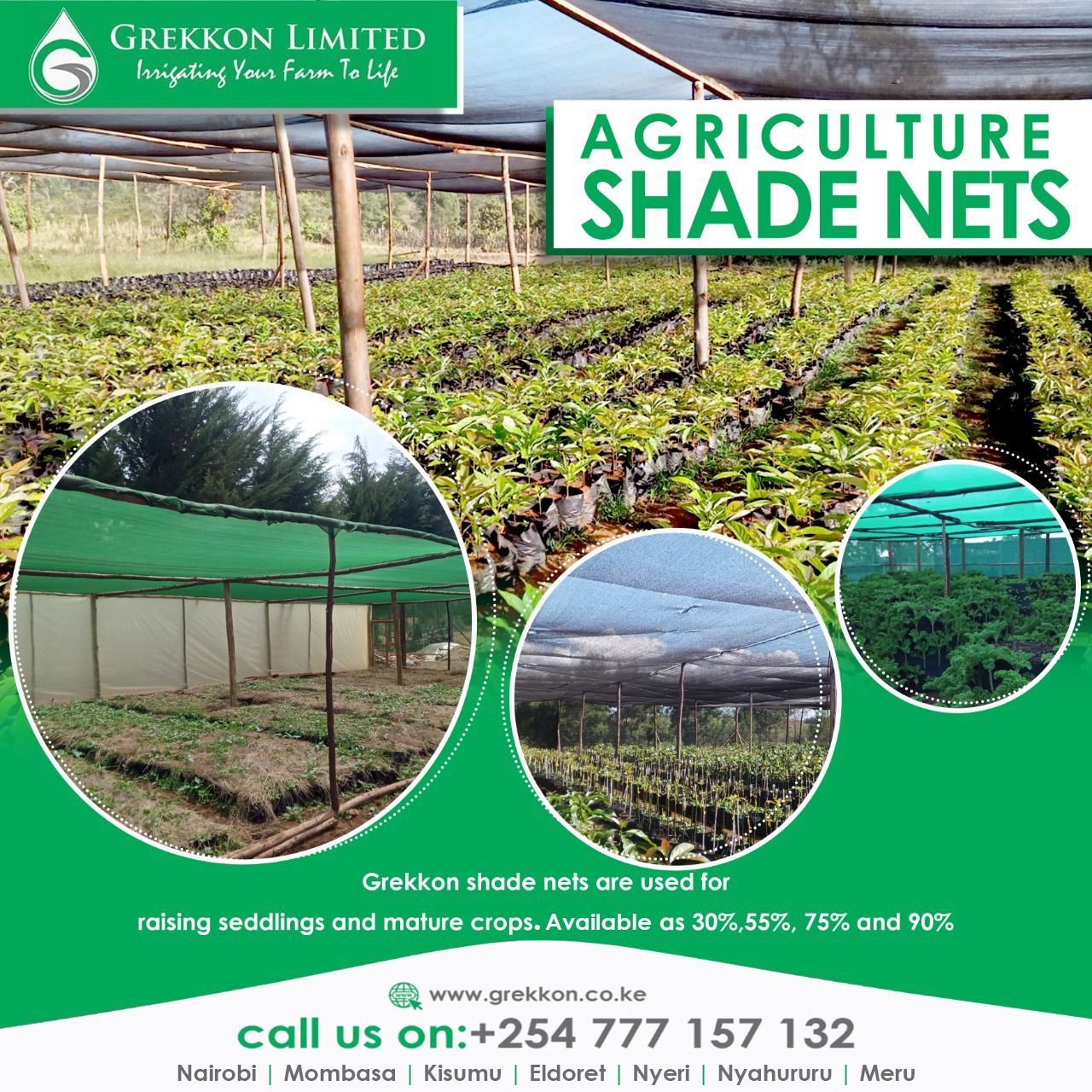
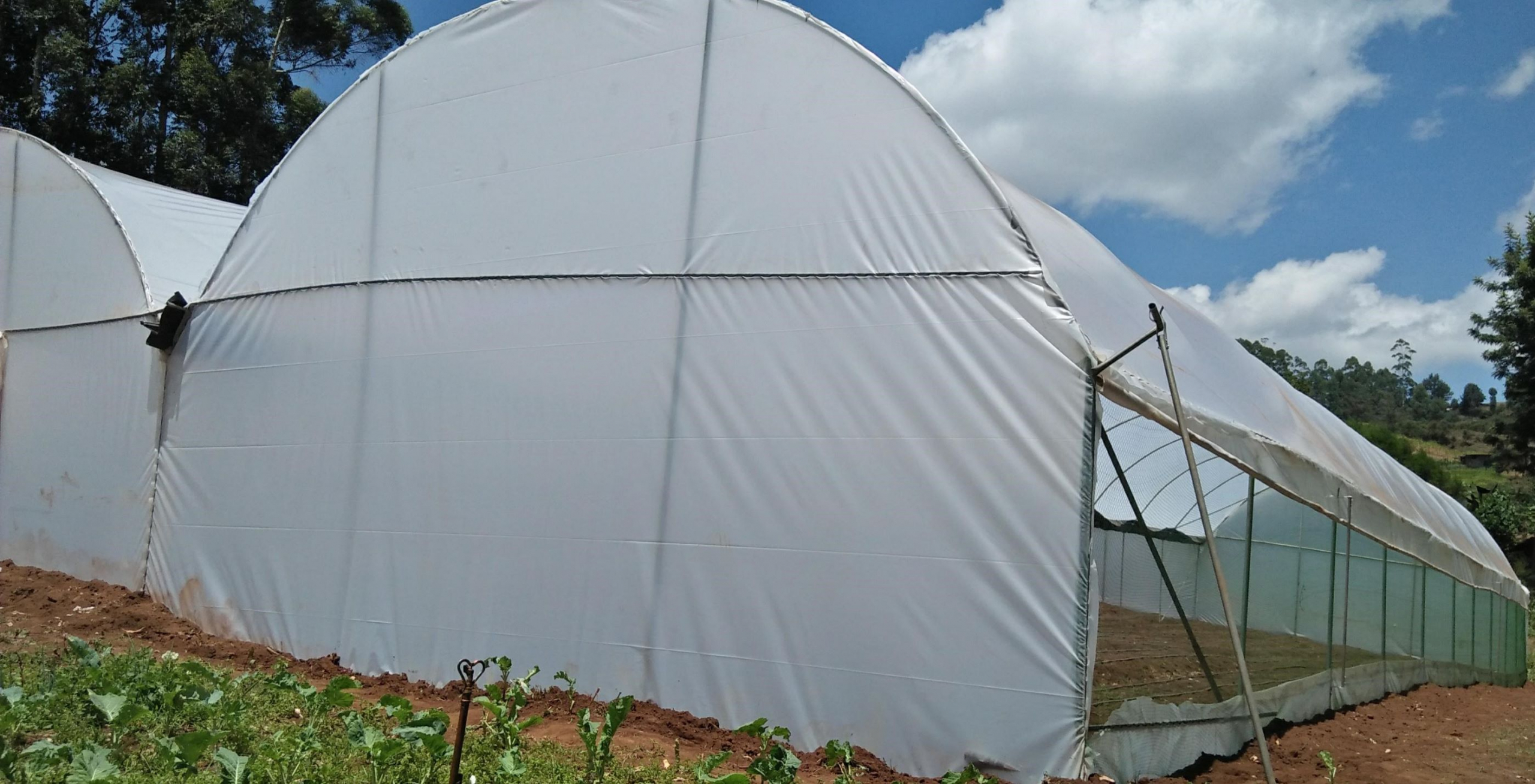
Hello,
I hope you are keeping well. I would like you to help me with a quotation for a drip kit that include drip irrigation equipment, pipes and solar pump, any other required items for a 4.2 Acre tissue cultured Banana Plantation in the above mentioned location. Please include a complete Solar (pump) Irrigation Kit. This quotation should for the drip kit only because the Borehole drilling is already done.
My farm is located at Sidada village, 1.5 Km off Lana shopping center along Kisumu Busia Road.
I will really appreciate if this would be done today – sorry for the rush.
For more details reach me on phone number +254733938252
Thanks a lot for your support.
Good morning Edwin,
Our Kisumu office team will be in touch with you
Best regards,
Customer Service
What is the cost for drip lines to cover area of 180m by 90m with 3 or 2 lines inmwingi
What flexible pipe would you recommend for dryland areas of Amudat, Uganda. to be fastened on a tank tower of 5000L for irrigation. We can also talk on +256773144759
Good afternoon Akena,
We will call you to advice
Best regards,
Customer Service